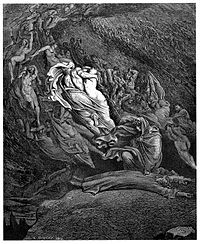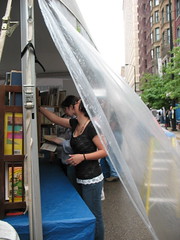 46. The State of Jones: the Small Southern County that Seceded from the Confederacy, by Sally Jenkins and John Stauffer
46. The State of Jones: the Small Southern County that Seceded from the Confederacy, by Sally Jenkins and John StaufferThere is a part of the history of the American Civil War that is not very well-known, that is rarely taught in the schools. It is the story of southerners who believed in the Union, who not only refused to fight for the Confederacy, but actively fought against it. Some did so by joining the Union forces, others did so by engaging in guerrilla warfare. The rural county of Jones in Mississippi was a stronghold of men who opposed secession. Some were staunch Unionists. Some were anti-slavery. Some believed it was a rich man's war and a poor man's fight. One such man was Newton Knight, and this is his story.
Newton Knight was the grandson of Jackie Knight, one of the early settlers in this part of Mississippi. By the time war came, he was "merely a rich man in a state full of tycoons", but the owner of several hundred acres of cotton and rice, and of a couple of dozen slaves. But his son, Albert, Newton's father, unlike Jackie's other children, refused to own any slaves, and led a modest life as a shoemaker and tanner. This split in the family would echo down through the years and the generations.
When the Civil War began, Newton, like many others, was forced into service in the Confederate Army. After Vicksburg, he, like many others, deserted. He spent the rest of the war with a band of like-minded souls, fighting the Confederacy in Jones County. The book does not, however, end with Lee's surrender, because the war really didn't end there. There was a period when men like Knight were in the ascendancy, when it looked as though the Union had won the war. But it soon became apparent that, in Mississippi at least, the South had won. National politics meant that the federal government soon declined to enforce the rule of law, and ex-Confederates came to power through murder and intimidation at the polls, leaving a legacy of racial injustice that still haunts this country today.
There's another part of Newton's story that's told here, the story of his love for a black woman, a woman named Rachel who was owned by his grandfather. Newton was married to a woman named Serena, by whom he had several children, but he also had children by Rachel. Now, it wasn't unusual for a white man to have children by a slave woman. What was unusual was that theirs was a true consensual relationship. He viewed her as his wife (the authors suggest that later conversions of some members of the family to Mormonism might have been caused, at least in part, by that faith's then recognition of plural marriage), he recognized and helped to raise and support his children by her, he made sure she had financial independence.
One would like to know what it was that caused Albert (and, through him, his children) to be not only opposed to slavery, but a friend to African-Americans. I cannot, however, fault the authors for being unable to answer this question; it is, at this remove, likely unanswerable.
I was, for the most part, riveted by this book. If I have any quibble with it, it is that in the early part it jumps around a bit too much for my taste. However, the authors combine serious scholarship and research (among other things, they located and interviewed descendants of Knight) with good storytelling. Civil War buffs will appreciate the vivid descriptions of the battle of Corinth, the siege of Vicksburg, and the guerrilla bands. About the only folks who won't like this book are those who don't want their preconceived ideas about the south and the Confederacy disturbed.
(For another story of Union sympathizers in the South, this one fiction, I highly recommend Sharyn McCrumb's Ghost Riders, one of her "Ballad Series".)




















